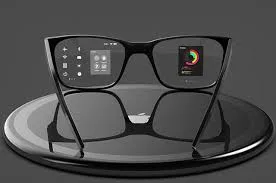
The future of AR glasses is rapidly unfolding in 2025, with tech giants Meta, Apple, and Google leading the charge to revolutionize wearable technology. These companies are investing heavily in augmented reality (AR) to create devices that seamlessly integrate digital content into our daily lives, aiming to transform how we interact with information, work, and each other.
Meta’s Vision: From Ray-Ban to Orion
Meta has been at the forefront of AR innovation, building upon its collaboration with Ray-Ban to develop smart glasses that combine style with functionality. The upcoming Orion glasses are expected to feature integrated displays, allowing users to access notifications, navigation, and real-time information without looking down at a smartphone. These advancements align with CEO Mark Zuckerberg’s vision of reducing screen time by introducing more natural and immersive ways to interact with technology.
Apple is reportedly working on its own AR glasses, aiming to provide a seamless experience within its ecosystem. While details remain scarce, the company’s focus is likely on creating a device that offers intuitive controls, high-quality visuals, and tight integration with existing Apple services. This approach could position Apple to deliver a product that feels like a natural extension of its current lineup, appealing to its loyal customer base.
Google’s Strategy: Leveraging AI and Android
Google’s efforts in AR glasses are centered around leveraging its advancements in artificial intelligence and the Android platform. The company is developing smart glasses that can provide real-time translations, contextual information, and hands-free access to digital content. By integrating these capabilities, Google aims to offer a versatile device that enhances productivity and accessibility.
Market Trends and Consumer Adoption
The AR glasses market is poised for significant growth, with projections indicating a substantial increase in adoption over the coming years. Factors driving this trend include advancements in display technology, improved battery life, and the development of compelling use cases across various industries. As these devices become more affordable and user-friendly, they are expected to gain traction among both consumers and enterprises.
Challenges Ahead
Despite the promising outlook, several challenges remain in the widespread adoption of AR glasses. These include concerns about privacy, the need for robust content ecosystems, and the development of intuitive user interfaces. Additionally, ensuring comfort and aesthetic appeal will be crucial in encouraging users to incorporate these devices into their daily routines.
Conclusion: A Transformative Decade for Wearable Tech
The future of AR glasses in 2025 represents a pivotal moment in the evolution of wearable technology. As Meta, Apple, and Google continue to innovate and refine their offerings, AR glasses are set to become an integral part of how we experience and interact with the world around us. By addressing current challenges and focusing on user-centric design, these devices have the potential to redefine our relationship with technology, making it more immersive, intuitive, and seamlessly integrated into our lives.